| Home |
| Acknowledgments |
| Conventions |
| Glossary |
| Maps |
| References |
| Links |
| Articles |
| Thumbnails |
| Species
list |
| Family |
| Next
species |
Additional Photos

side
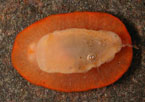
underside
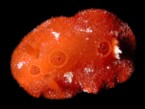
multiple spots
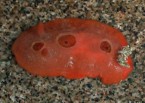
with ridges

young
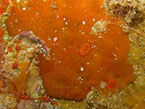
on food sponge
_______________
GALLERY

Aldisa pikokai Bertsch & Johnson, 1982
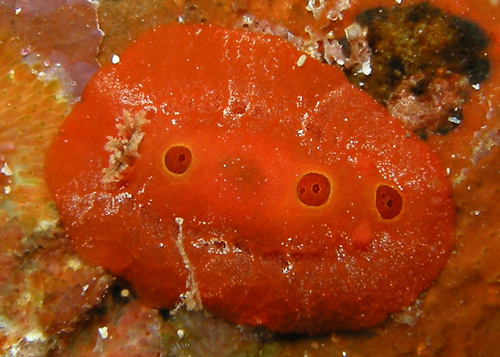
| Maximum size: about 24 mm. Identification: This is a light orange-red dorid with red gills frosted with white. There are three crater-like depressions on the notum. The notum is decorated with white flecks that often form patches flanking the gills and rhinophores. In young animals, the notum is papillate but in older animals it develops a network of low, irregular ridges that appear more prominent if the animal is "flattened out." Papillae in older animals are not limited to the junctions of the ridges (particularly toward the margins of the notum). The bottoms of the pits between the ridges are not reticulated with lighter pigment. It may be distinguished from Aldisa sp. #2 by its low ridges, its less dense white pigment and its lack of reticulated pigment in the pits between the ridges. It may be distinguished from Aldisa sp. #1 by the presence of three crater-like depressions on its mid-notum (in contrast to two in the latter species). Natural history: Aldisa pikokai is a moderately common nocturnal dorid found under rocks at moderately exposed to highly exposed rocky sites. It may occur at depths of 4-64 m (13-210 ft). Scott Johnson reports it apparently feeding on an orange-red encrusting sponge and we've found it in association with similar sponges in the field. (Note 1) Distribution: Big Island, Maui, Oahu, Kauai and French Frigate Shoals: (Note 2) Taxonomic notes: This species is listed as Aldisa sp. in Bertsch and Johnson, 1981 (bottom photo). Aldisa sp. #2 was probably lumped with this species in the original description and it's possible that examination of the holotype of A. pikokai will ultimately result in assigning that name to Aldisa sp. #2, instead. We've opted to provisionally use the name for this form since it's the one shown in the A. pikokai photo in Bertch & Johnson, 1982 (Fig. 6) and the one attributed to the type location in Bertch & Johnson, 1981. It may have been first reported from Hawaii in Bertch & Johnson, 1981. Photo: CP: about 24 mm: Kapalua Bay, Maui; May 31, 2016. Observations and comments: Note 1: Based on available photos, the sponges associated with this species appear to be lighter in color with more prominent oscules than the sponges associated with Aldisa sp. #2 (perhaps, indicating niche partitioning based on food species?). Note 2: Both Aldisa pikokai and Aldisa sp. #2 probably represent widespread Indo-Pacific lineages that tend to mimic each other in any particular region. Conceivably, both may be composed of multiple allopatric species. However, determining whether the Hawaiian population of A. pikokai is endemic or also occurs elsewhere will require more work. |
| Thumbnails |
Species
list |
Family | Next species | Top |